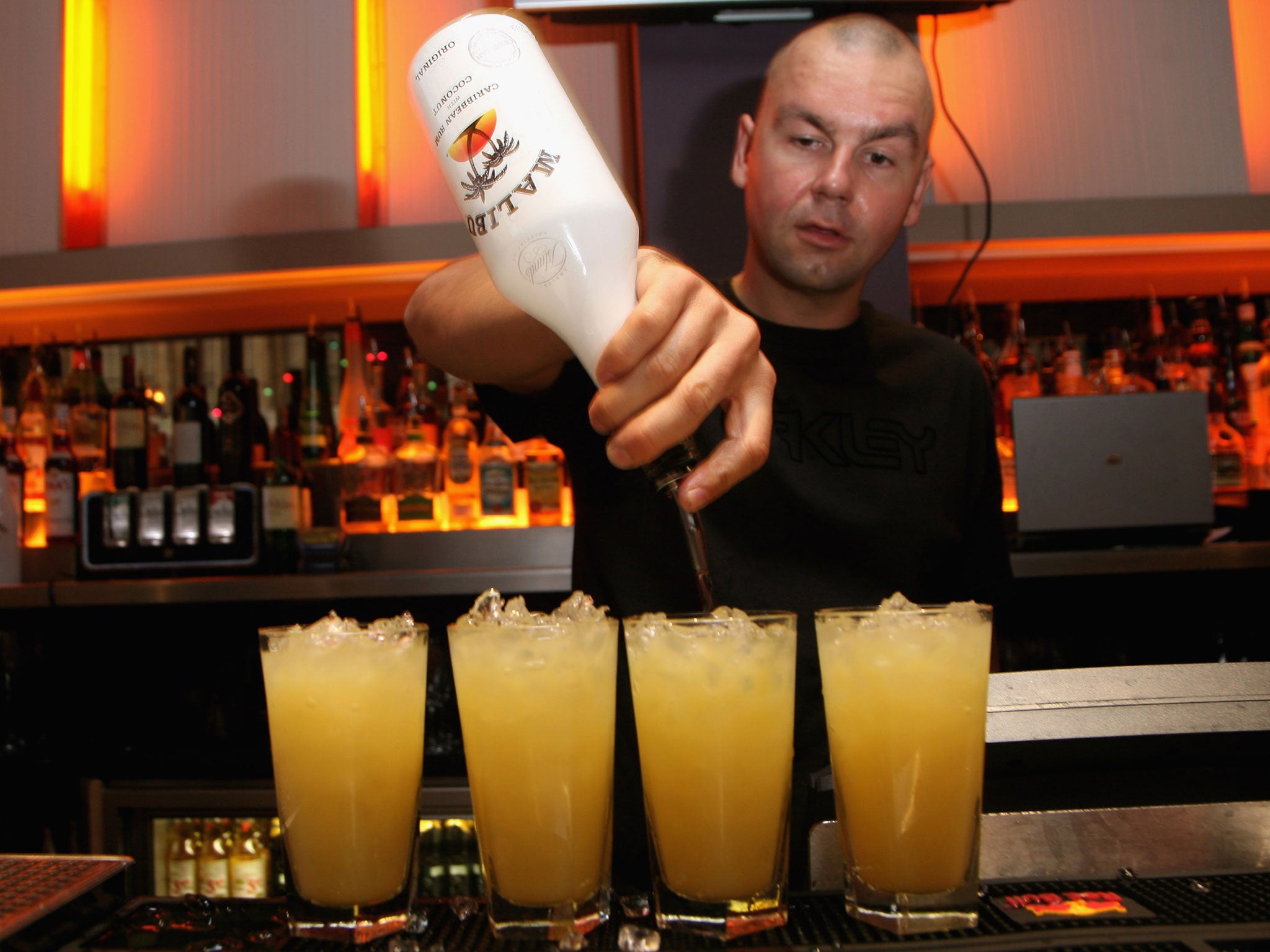At last: Science demonstrates the best way to get served at the bar
It's taken the development of sophisticated robotics, but we're finally there

It's a question that has baffled even the cleverest minds since time immemorial: in a busy pub, exactly how do you get the barman to serve you next?
Thirsty punters have tried many gambits to catch the capricious eye of their server; most use a hopeful smile, others a firm upward nod, while a few will simply wave a wodge of cash until they get some service. None of these tactics, however, has ever seemed to pay regular dividends in terms of getting one's sweaty hands on one's drink.
However, scientists from the Bielefeld University in Germany have turned to the fledging discipline of applied robotics to finally get to the bottom of this liquid mystery.
Using a one-armed googly-eyed robot called James, which stands for 'Joint Action in Multimodal Embodied Systems', the Bielefeld team is finally researching the subtle cues of body language that humans use to try and get their drinks before everyone else.
With a tablet computer for a head, robot James makes eye contact with customers at a research bar, sifting through punters, accepting orders and serving drinks with one four-fingered metal arm. In effect, the researchers are trying to see if they can teach James to understand unspoken human communication.
"In order to respond appropriately to its customers the robot must be able to recognise human social behaviour," explains Professor Jan De Ruiter, one of the project's partners.
The idea is to try and train James to understand social cues from people it has never encountered before in a noisy bar environment in which it might not be able to respond accurately to spoken instructions.
"Currently, we are working on the robot’s ability to recognise when a customer is bidding for its attention," says De Ruiter. "Thus, we have studied the process of ordering a drink in real life."
The machine requires a 'clear-cut definition of which signals indicate an order and which do not'. And in order to get these definitions, the team had to go into the field, visiting pubs and clubs in Bielefeld and Herford in Germany, and Edinburgh in the UK, to take recordings of the way people made their orders.
The results were unexpected. Many of the signs that conventional wisdom dictates win the attention of bar staff are actually that common. In fact, only one in 15 customers looked at their wallets as a signal, and fewer than one in 25 gestured at the bartender.
So which gestures do people deploy most successfully?
The researchers found that over 90 per cent of the customers they observed would position themselves directly at the bar and turn straight towards it or a member of staff.
Visitors who were not trying to buy a drink would instinctively avoid these behaviours. Subconsciously, they maintain a small distance to the bar and turn away from it.
"Effectively, the customers identify themselves as ordering and non-ordering people through their behaviour," says psychologist Dr. Sebastian Loth, one of the authors of the study.
The James project is funded by the EU. Having started in 2011, it's due to come to an end in January 2014.
Subscribe to Independent Premium to bookmark this article
Want to bookmark your favourite articles and stories to read or reference later? Start your Independent Premium subscription today.

Join our commenting forum
Join thought-provoking conversations, follow other Independent readers and see their replies